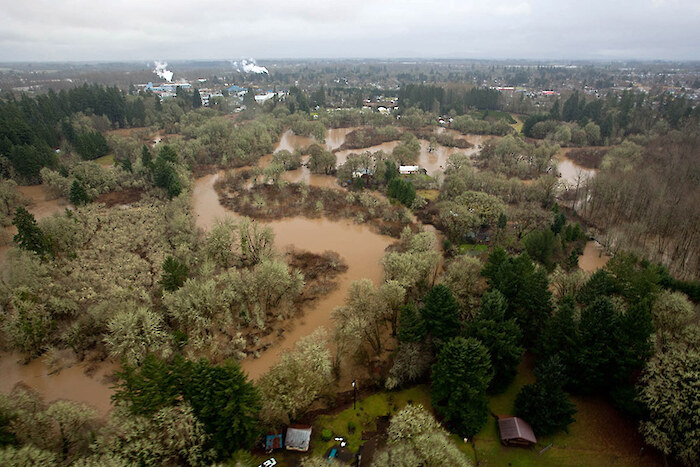
Floodplain forests of cottonwood, alder, cedar, willow and fir once covered much of the Willamette River floodplain, ranging in width from two to seven miles across the valley floor. These forests absorb floodwaters, remove sediments and pollution, reduce water temperatures, and provide important food and shelter for many species of fish and wildlife. Today, less than 20% of the original floodplain forest remains, much of it in very narrow bands along the river.
This indicator measures the extent of intact floodplain forest within one kilometer of the Willamette River, and compares it to 2050 Conservation Targets.
